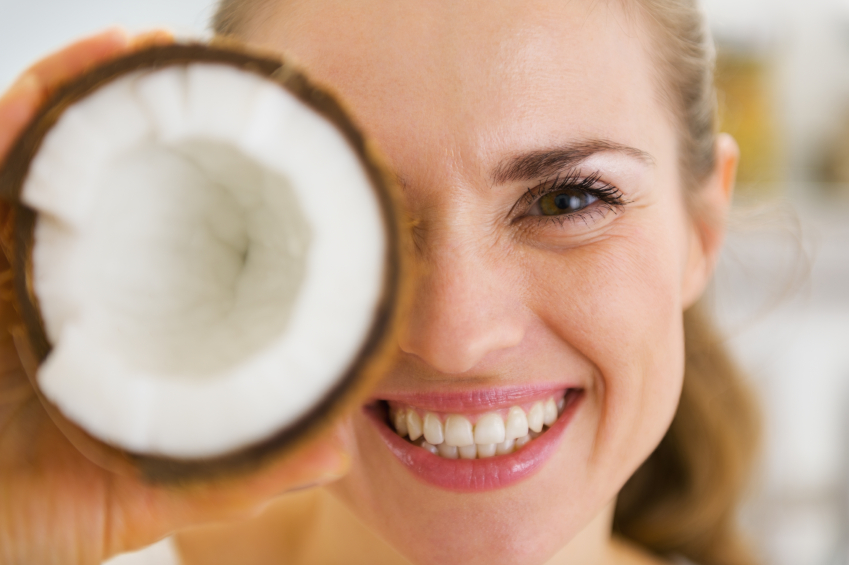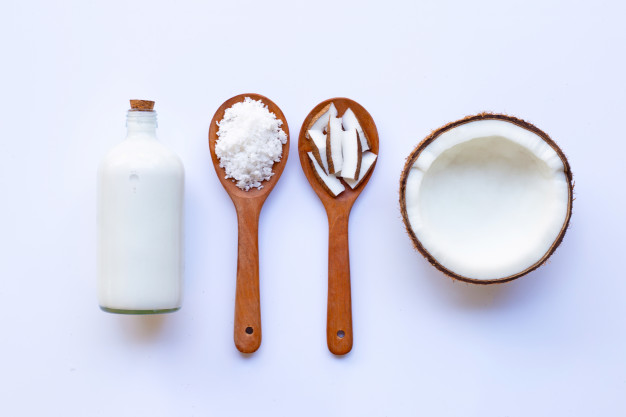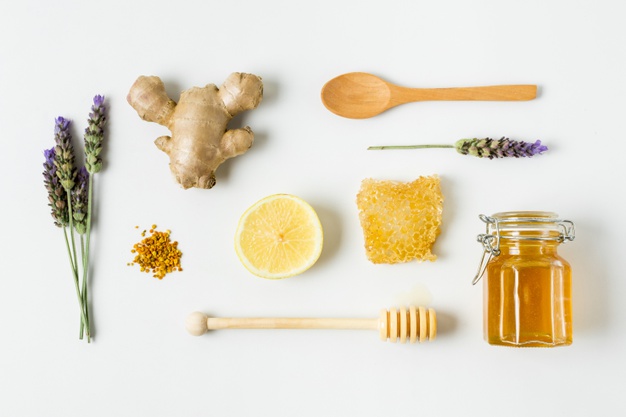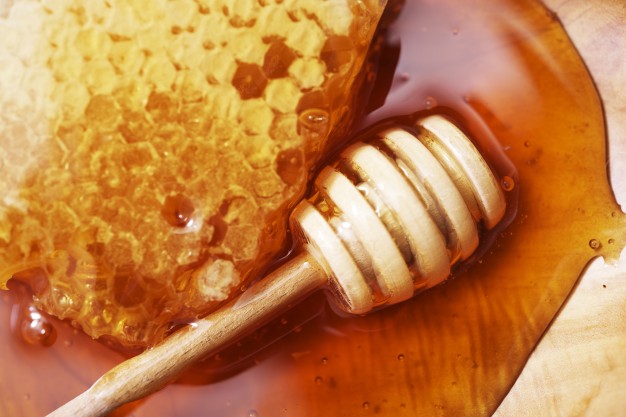Top 8 Home Remedies for Yeast Infection in Women
If you’re suffering from a yeast infection (vaginal candidiasis) natural remedies for yeast infection can help you get rid of the itch as soon as possible. A vaginal yeast infection, apart from giving very unpleasant symptoms, such as vaginal itching and discharge, can seriously affect your quality of life.
If left untreated, simple yeast infections can convert into recurrent yeast infections, which are much more difficult to treat. So make sure you start your treatment as soon as possible.
Fortunately, you can find the solution to your problem right in your pantry! Let’s have a look at my list of 8 best and scientifically supported home remedies for yeast infection in women.

First of all, are You Sure It’s a Yeast Infection?
Before you start your treatment, it’s best to see your doctor, who will take swabs of your vaginal secretions and have them analyzed in a lab to get a proper diagnosis. The most common yeast infection symptoms are:
- Vaginal itching and burning
- White, thick discharge (at the beginning it may be transparent and watery)
- Swollen and red labia
It’s easy to confuse yeast infection symptoms with bacterial vaginosis (BV) or sexually transmitted diseases, so getting diagnosed by a doctor is crucial.
If you cannot see your doctor, you can order an online vaginal health test from MyLabBox. They’ll send you a kit so you can take swabs of your vaginal secretions at home and send them straight to their lab in a prepaid envelope. Within a few days, you’ll be able to check your results online and start your treatment.
Once you’re sure it’s a yeast infection, you can try the following natural remedies to treat yeast infections:
Coconut Oil for a Yeast Infection
Numerous studies show that coconut oil has got excellent antifungal qualities and it can kill Candida albicans which causes yeast infections. It can also enhance the effect of antifungal suppositories, such as Clotrimazole.
It’s even more effective when used in combination with antifungal essential oils. Just make sure you use high-quality organic coconut oil!. To make coconut oil suppositories:
- Mix five tablespoons of coconut oil with ten drops of tea tree oil, lavender oil or oregano oil.
- Place the mixture in a suppository tray and leave it in the fridge.
- Once it becomes solid, insert one suppository into your vagina before going to bed.
- Use a panty liner as the suppository will melt and it can leak out.

Ginger Tea for a Yeast Infection
Ginger has got proven antifungal qualities and it can be used to treat different kinds of yeast infections. Studies show that it can kill not only Candida albicans, but also other Candida strains.
If you want to treat a vaginal yeast infection, make ginger tea tampons:
- First, brew a cup of good quality ginger tea
- Mix it with two tablespoons of coconut oil and a few drops of tea tree oil for a stronger effect.
- Soak a tampon in the mixture and insert it into your vagina overnight.
- You can repeat the treatment until your symptoms disappear.

Tea Tree Oil for a Yeast Infection
Tea tree oil is one of the most potent essential oils with antifungal properties that can help you treat a yeast infection. It’s best to use it in combination with a carrier oil, such as coconut oil or olive oil to avoid skin irritation.
Learn how to make tea tree oil and coconut oil suppositories here or check my review of tea tree suppositories with tea tree oil that you can buy on Amazon.

Lavender Oil for a Yeast Infection
If you don’t have tea tree oil at home, use lavender oil. It’s as potent as tea tree oil or oregano oil when it comes to treating yeast infections.
You can mix it with coconut oil to make homemade suppositories (check my recipe here) or with ginger tea and coconut oil to make antifungal tampons (see the recipe above).
Honey for a Yeast Infection
Honey, just like other bee products such as bee pollen, beeswax, and propolis, has been scientifically shown to be an excellent yeast infection remedy. To use honey for yeast infection:
- Mix two tablespoons of high-quality raw honey with two tablespoons of probiotic yogurt.
- Squirt the mixture slowly into your vagina with a clean syringe before going to bed.
- Repeat the treatment until your symptoms are gone.

Yogurt for a Yeast Infection
Natural, unsweetened yogurt rich in probiotics (friendly bacteria) can help you fight a yeast infection and reestablish a healthy bacterial flora in your vagina to prevent future bouts.
You can use it in your vagina overnight together with honey (see the recipe above) and also speed up your recovery by eating yogurt every day. Make sure that you choose yogurt that contains live bacteria cultures or make your own yogurt at home with a yogurt starter.
To make the most of probiotic health benefits, you can also take probiotic supplements that are designed especially for women to boost their vaginal flora and prevent vaginal infections naturally.

Cranberry Juice for a Yeast Infection
Studies show that cranberry juice can not only help you treat UTI but also vaginal yeast infections. It’s thanks to one of its compounds called proanthocyanidins, which stops Candida cells from growing.
It would be difficult to treat a vaginal yeast infection with cranberry juice only, but you can use it to complement another natural antifungal treatment.

Drinking cranberry juice during your yeast infection treatment can help you recover faster as well as prevent future yeast infections. Learn more about using cranberries for a yeast infection here.
Aloe Vera for Yeast Infection
Many studies have confirmed that aloe vera has got excellent antifungal and antibacterial properties. You can make your own suppositories using aloe vera pulp (if you happen to have an aloe vera plant at home) or aloe vera gel (make sure that it’s a 100% natural gel ). If you want to use aloe vera as a natural remedy, prepare aloe vera suppositories for yeast infection:
- Mix aloe vera gel (or liquidized aloe vera pulp) with coconut oil, 1:8 ratio.
- Pour the mixture into a suppository tray and leave it in the fridge until solid.
- Insert one suppository into your vagina before going to bed and repeat the treatment until your symptoms are gone.
- Use a pad after you insert a suppository, as it may leak.
What Else Can I Do to Speed up my Recovery From a Yeast Infection?
The following tips will help you speed up your recovery and prevent yeast infections:
- Eat probiotic-rich foods such as sauerkraut, olives in brine, pickles or take probiotic supplements every day during and after your treatment. Probiotics will help reestablish healthy levels of friendly bacteria in your gut and vagina making it difficult for Candida cells to keep feeding and multiplying.
- Never use vaginal douches. Even if it’s an antifungal douche, it can make things worse by rinsing out not only Candida cells but also friendly bacteria that are crucial in protecting your vagina from infections.
- Avoid drinking coffee and eating foods that contain caffeine, such as chocolate and cocoa. They raise cortisol levels in your blood which can lower your immunity making it more difficult to recover.

- Abstain from sexual activity until you recover completely. Sex can lead to micro-injuries within your vaginal area creating a favorable environment for yeast to thrive.
- Do not use any scented soaps, feminine washes or intimate deodorants. They usually contain harsh chemicals that can make your infection worse or make you more prone to yeast infections. It’s best to switch to 100% natural feminine washes that contain antifungal ingredients that will help you fight the infection, or use only water to wash your intimate areas during your yeast infection treatment.
- Use cotton underwear and loose-fitting clothes to allow the air to circulate freely and keep your vaginal area dry and cool.
Once you fully recover from a yeast infection, it’s good to introduce small changes to your lifestyle to help prevent reinfection. You can learn more about it in my article about preventing vaginal yeast infections.

What’s the Best Way to Treat Recurrent Vaginal Candidiasis?
If you suffer from chronic vaginal yeast infections, the above natural remedies may not be potent enough to treat it. However, there is a natural treatment that is successfully used to treat recurrent yeast infections, it’s boric acid.
Although it’s not a home remedy, this natural mineral found in volcanic rocks has fantastic antifungal properties and it’s a great choice for women who want to treat vaginal infections naturally. You can buy boric acid suppositories online.
To treat a yeast infection, insert one suppository in the morning and one in the evening for 7 consecutive days. Once you recover, you can still insert one suppository a week to help prevent yeast infections.
Boric acid is not only one of the best treatments for yeast infections, it’s also been shown to treat BV and trichomoniasis, a sexually transmitted disease.
Conclusion
It’s amazing how many yeast infection remedies nature has provided for us. There are many more natural cures for yeast infection that you can try. For example, there are at least 10 other essential oils that kill Candida cells!
If you’re pregnant or breastfeeding, do not attempt to treat your yeast infection at home. Your doctor will prescribe you a special treatment for yeast infection that is safe for you and your baby.

What is your favorite home remedy for a yeast infection? Have you tried any of my recommendations? I’d love to hear about your experiences! Please share your stories and questions in the comment section below.


